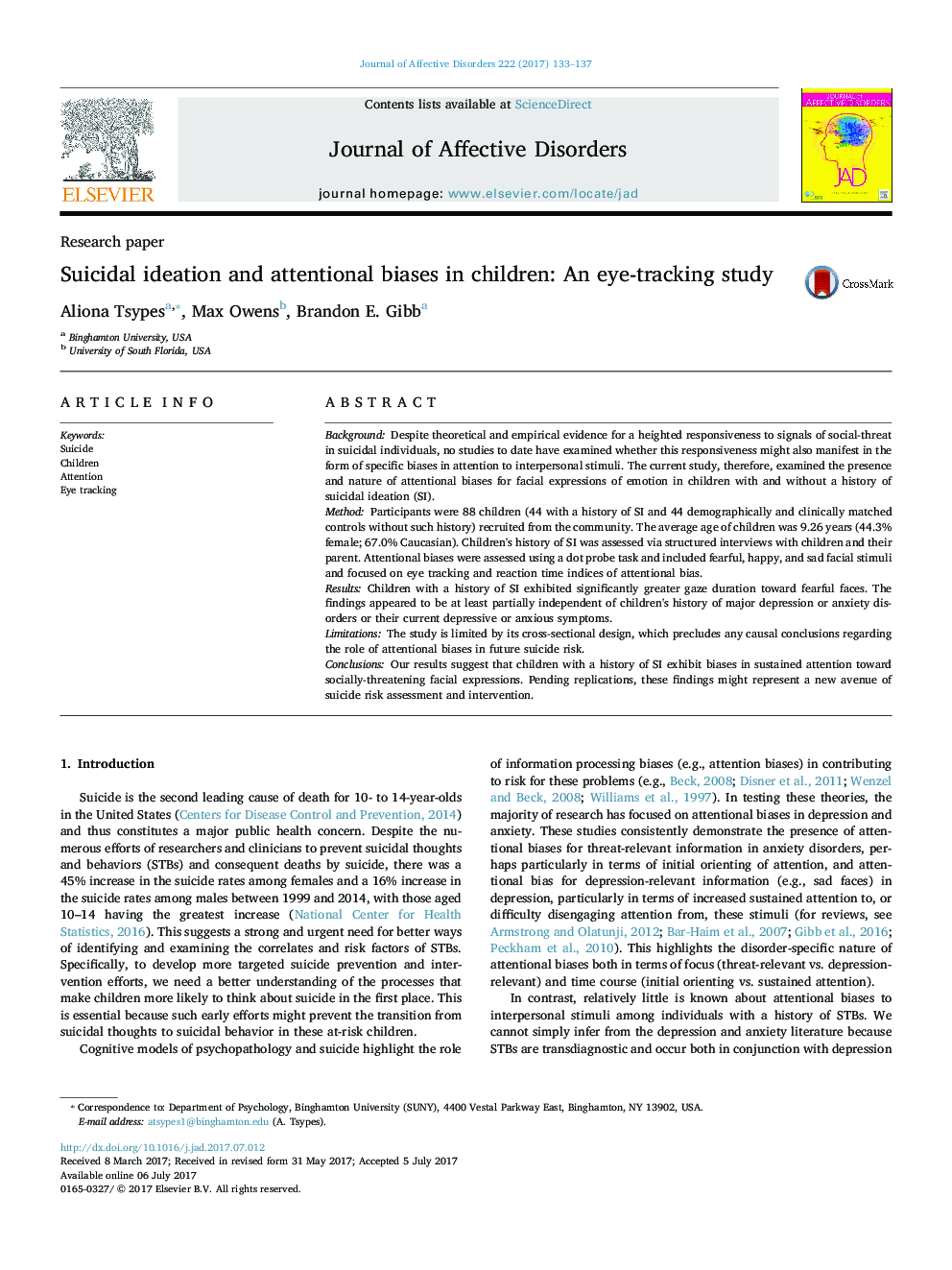| کد مقاله | کد نشریه | سال انتشار | مقاله انگلیسی | نسخه تمام متن |
|---|---|---|---|---|
| 5721853 | 1608103 | 2017 | 5 صفحه PDF | دانلود رایگان |
- Used eye tracking to assess attentional biases to interpersonal stimuli in children.
- Children with suicidal ideation had greater gaze duration toward fearful faces.
- Results independent of children's history and symptoms of depression and anxiety.
- Uncovered specific bias that might constitute a potential suicide prevention target.
BackgroundDespite theoretical and empirical evidence for a heighted responsiveness to signals of social-threat in suicidal individuals, no studies to date have examined whether this responsiveness might also manifest in the form of specific biases in attention to interpersonal stimuli. The current study, therefore, examined the presence and nature of attentional biases for facial expressions of emotion in children with and without a history of suicidal ideation (SI).MethodParticipants were 88 children (44 with a history of SI and 44 demographically and clinically matched controls without such history) recruited from the community. The average age of children was 9.26 years (44.3% female; 67.0% Caucasian). Children's history of SI was assessed via structured interviews with children and their parent. Attentional biases were assessed using a dot probe task and included fearful, happy, and sad facial stimuli and focused on eye tracking and reaction time indices of attentional bias.ResultsChildren with a history of SI exhibited significantly greater gaze duration toward fearful faces. The findings appeared to be at least partially independent of children's history of major depression or anxiety disorders or their current depressive or anxious symptoms.LimitationsThe study is limited by its cross-sectional design, which precludes any causal conclusions regarding the role of attentional biases in future suicide risk.ConclusionsOur results suggest that children with a history of SI exhibit biases in sustained attention toward socially-threatening facial expressions. Pending replications, these findings might represent a new avenue of suicide risk assessment and intervention.
Journal: Journal of Affective Disorders - Volume 222, November 2017, Pages 133-137
